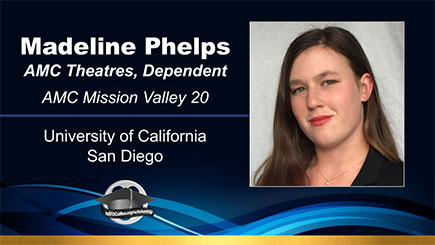|
The movie Ladybird directed by Greta Gerwig has all of the makings of a movie required to be seen and consumed on the big screen. The homey visuals, high school story, and capacity for realism all combine into an incredible tale of an underdog, a dreamer, and most importantly, a high school student trying to find her path to her future; throwing aside everything she is in order to become herself again and bring the audience with her. This immersive experience could not be appreciated fully if it were viewed on a phone or other device; even in an atmosphere where you could not be disturbed. There is something crucial about the largeness of the screen that allows viewers to truly see themselves in the story and be hit with every punch thrown by the directors and writers in a conclusive crescendo of emotion. Taking place from 2002 to 2003, Christine McPhearson, or "Ladybird," played by Saoirse Ronan, is going through her senior year at Immaculate Heart Catholic High School and grappling with her wealthy classmates who she longs to be like. Craving sophistication, adventure, and a taste of the outside world, she strives to extend herself out of the poorer side of Sacramento, butting heads with her mother in the process. The atmosphere alone that this work of art generates contributes to the emotion for the film that cannot be replicated outside of a movie theater. The slightly grainy texture of the movie provides the notion that it takes place in the past despite being released in 2017. Textures in movies are used to change the mood and atmosphere of a film and are used widely in action movies, romantic comedies, and horror films alike, assigning the work to a genre and an audience. Coming-of-age movies that I have had the privilege to watch all seem to support a very bright atmosphere and focus on realism. This texture however provides a softer and grimier feel to the audience which in turn makes it feel less sheltered. In a movie theater, this can be all-consuming and greatly contributes to the immersion process which is a necessity in this movie. If Ladybird were viewed on a phone or tv screen or another device, this atmosphere would be lost because of the smaller screen and subsequently the shift in focus. Adjacent to the atmosphere is the sense of immersion that the film creates. This is because of the atmosphere, but also because of the incredible actors and directing, however, it is not a story that generates a lot of stress which would suck viewers into the plot without allowing them to leave. Instead, it focuses on something small and expands sympathy to one family in a normal life, requiring more effort to stay engaged. Having gone to high school, I feel as though Gerwig distinctly captures the awkwardness, crudeness, and love that surrounds groups of teenagers trying to find themselves in a world they feel like they have no place in. Navigating friendships, financial issues, and mental health are not as high-stakes as saving the universe from aliens or winning a national competition. Due to that, it requires commitment from the audience to care about Ladybird, her relationship with her mother, her father, her brother and his girlfriend, and the fluid relationships she has with her peers and Sacramento. If this movie were seen on a tv or device, that immersion might be lost with the distractions in everyday life. I originally watched this movie on Netflix and I know it greatly changed my perception of the movie and I would much rather have seen it on the big screen from the beginning. I became very engaged in this movie because of the message and where I was in my life when I watched it but I was consistently distracted by other things going on and I would have preferred a bigger screen. I know to receive the full impact of the movie I would have had to see it in theaters and I think everyone should have that experience. Conclusively, the atmosphere and immersive experience that are generated by a small, coming-of-age film make it necessary to experience the film on the big screen. Even with the heightened atmosphere that a theater brings, the requirement of sympathy for the characters and the strength of the plot at its small scale generate increased reason for a movie theater to be the place to go to see it. |
|
||||||
Copyright ©
2024
NATO CA/NV

